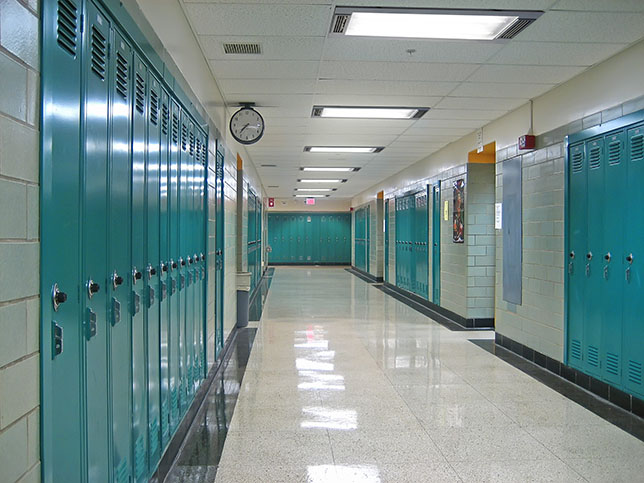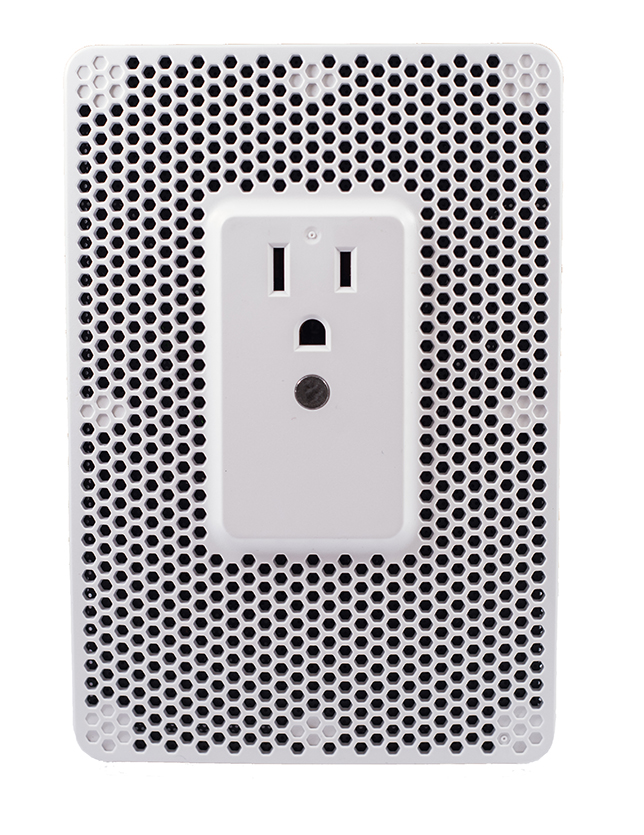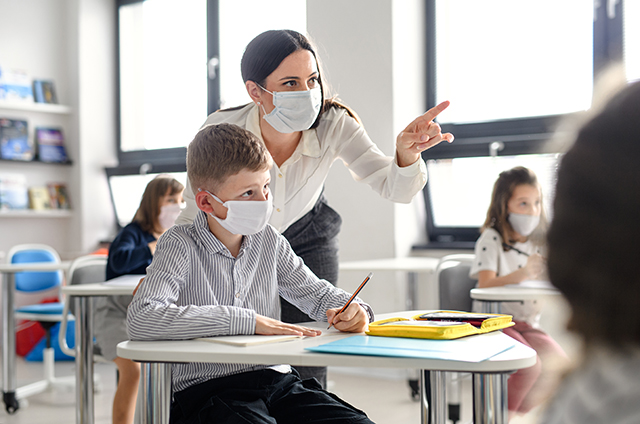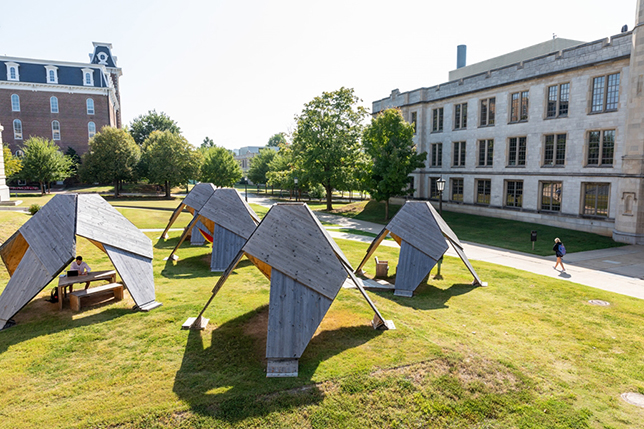Clean air in schools is not only essential for addressing respiratory concerns but also has broader benefits for overall health and learning. The American Lung Association emphasizes that healthier indoor air can benefit both students and staff. A clean and well-ventilated environment supports cognitive function, concentration and the general well-being of everyone in the school community.
IAQ monitoring systems solutions provider Attune and the Illinois Chapter of ASHRAE recently partnered to provide new equipment to two K–12 public schools in Western Springs, Ill. Forest Hills Elementary School and McClure Junior High received Attune IAQ monitoring systems as part of an ASHRAE sustainability research project that began in February 2024.

Spring is a wonderful time of year. The days are longer, the weather begins to warm up, and everything is in bloom. However, for many people, this also means seasonal allergies will set in. The Centers for Disease Control and Prevention estimates that approximately 25% of adults and about 20% of children will suffer from seasonal allergies.
McMaster University is using technology to better control and manage its legacy thermal systems and create smarter buildings. Carmichael Engineering Ltd., a Canadian systems integrator, worked closely with ABB Canada’s leading experts and its highly adaptable smart building platform, ABB Cylon®, to improve energy efficiency, enhance user adaptability, and leverage innovative technologies in locations across campus.
Clean air isn’t a luxury – it’s a necessity. By leveraging cutting-edge technologies, schools can protect their students and staff at an affordable price. With so many entry points for threats to student and staff well-being, a single solution can’t cover every hole. Adopting a layered approach that utilizes multiple technologies allows schools to address the broad range of potential entries for pollutants. Here are a few key components of a multidimensional solution to ensure the highest air quality for your school.

HVAC indoor air quality company Modine has debuted the VidaShield UV24 Active Air Disinfection System for the K–12 school market. The product line combines UV-C light irradiation with air circulating fans and an optional ceiling light, the company said.
HVAC and air-cleaning systems performance testing solutions provider SafeTraces recently announced that the Clark County School District (CCSD) in Nevada has become the first public school district in the U.S. to achieve the UL Verified Ventilation & Filtration (VVF) annual verification mark in its portfolio of facilities, according to a news release.
There is a growing level of both interest and requirements to improving Indoor Air Quality (IAQ) through improved ventilation, temperature and humidity control, and filtration to improve the health of students and teachers in K–12 schools. Aging equipment often is not designed to meet these requirements, prompting replacement. But this replacement comes with an added benefit—that being significantly improved efficiency.

Acoustics isn't only about creating quite classrooms. It's a critical part of the overall IEQ of a school—from classrooms to nurses' offices to administration spaces. New and better technologies exist to give schools solutions that achieve what is needed in today's world while keeping budget parameters in mind. These acoustical solutions start at the top with ceilings, and not all ceilings are alike. Join us as Sean Browne, Senior Manager of Research & Development for Armstrong World Industries, walks us through choosing the right ceiling to optimize acoustics for better learning experiences.
Today’s K–12 leaders are tasked with everything from adhering to rigorous academic standards to implementing operational procedures to building healthy school communities, and for many, sustainability unintentionally falls to the bottom of the priority list. Further, the cost of taking on green initiatives is on the rise, making it even more of a challenge for financially strapped school districts to meet sustainability expectations and commitments.
Extreme heat is becoming more and more of a problem during the early and late weeks of the school year. To prevent hot temperatures and poor air quality from being an issue for K–12 facilities, it’s important for school leaders to be proactive in their preparation.
With the start of a new school year, the health & wellness of students, teachers, and school district employees has become—more than ever—a top priority and concern.

Sensor solutions company FreshAir recently announced the launch of the FreshAir1 Smoking Detection System, according to a news release. The technology monitors for and detects tobacco and marijuana smoke, and it is geared toward use in school and university buildings.

Disinfection techniques that help make classrooms safe for students, teachers and staff are still top of mind. Here to discuss some of the benefits of ultraviolet light disinfection are Bruce Ramsay, Brand Manager for Visioneering, and Tim Stevens, Director of Product Management for Certolux. We’ll touch on some facts and myths about UV light, the role of UV light in maintaining clean education spaces, the challenges that education professionals should be aware of when purchasing UV light technology, and the technology’s benefits for end users in educational facilities. This episode of Schools in Focus is sponsored by Viscor, a Leviton company.
The North Bend School District in North Bend, Ore., recently announced that it has chosen Alen as its provider of indoor air quality solutions.
The Meriwether County School District in Greenville, Ga., announced this week that its school board has voted to install disinfection devices on buses.
It is a well-known fact that the environment affects human performance, both physically and mentally. This is especially true for students, who are impacted by the quality of air in their learning environment.

COVID-19 and many other viruses are thought to spread mainly from person to person through respiratory droplets and aerosols in the air. Studies suggest that emissions from people can span a room and be pulled into air circulation systems in just a few seconds. A strong air-monitoring and air-management strategy can make the difference between a healthy environment and one in which disease easily spreads.
Johnson Controls announced this week that it is contributing its OpenBlue Healthy Buildings portfolio to a pre-existing partnership between two science and safety organizations. UL and SafeTraces joined forces in March 2021 to begin evaluating the effectiveness of indoor air quality and HVAC systems, as well as infection control strategies, in K–12 schools.

As schools and universities prepare for the return of students and faculty after nearly a year of remote learning, many are faced with growing concerns around how to keep facilities safe in the post-pandemic world. This is doubly true when considering that crucial HVAC and building management systems (BMS) are often outdated and in need of replacement.
The results of a new survey from JLL have revealed that campus cleanliness and indoor air quality now rank among the top factors in college selection. JLL, a Fortune 200 commercial real estate and professional services firm, surveyed about 500 parents of tenth- through twelfth-grade students about their priorities while considering higher education destinations.

Maintaining indoor air quality has gained renewed importance as K–12 students around the country prepare to return to in-person learning full time. It’s one of the timeliest, most important methods of keeping learning environments safe as the COVID pandemic winds down. And the more we learn, the more we refine and revise what we thought we knew. Our guest is Scott Huffmaster, the commercial HVAC leader for indoor air quality for North America for Trane Technologies, Inc. This episode is sponsored by Trane.

The University of Arkansas is about to embark on a new round of energy-saving upgrades for its campus. The improvements will include the addition of LED lighting; fault detection diagnostics; upgrades to HVAC; and examination of building envelope systems and other retro-commissioning work. In total, the latest project will encompass some six million square feet of facilities.
The Indiana State School Bus Committee has approved the installation of ultraviolet light air purification systems on school buses statewide. The decision became final after the success of a trial program run in partnership with indoor air quality solutions provider Lumin-Air.
One of the most impactful and comprehensive ways these schools are earning trust as they reopen is by implementing HVAC solutions and clean air strategies. By integrating time-tested, scientifically-proven clean air strategies into existing infrastructure, school leaders can create highly connected facilities that deliver long-term resiliency, sustainability and productivity.
Industrial light fixture solutions company Kenall has announced that its Indigo-Clean technology has been proven in independent lab testing to safely kill 94 percent of viruses, including SARS-CoV-2 and Influenza-A.
Late last month, eight second-grade students from a single classroom at Penn Valley Elementary School in the Lower Merion School District near Philadelphia, Pa., tested positive for coronavirus. Because of the number of students affected, staff conducted an investigation and discovered a potential cause for the spread.